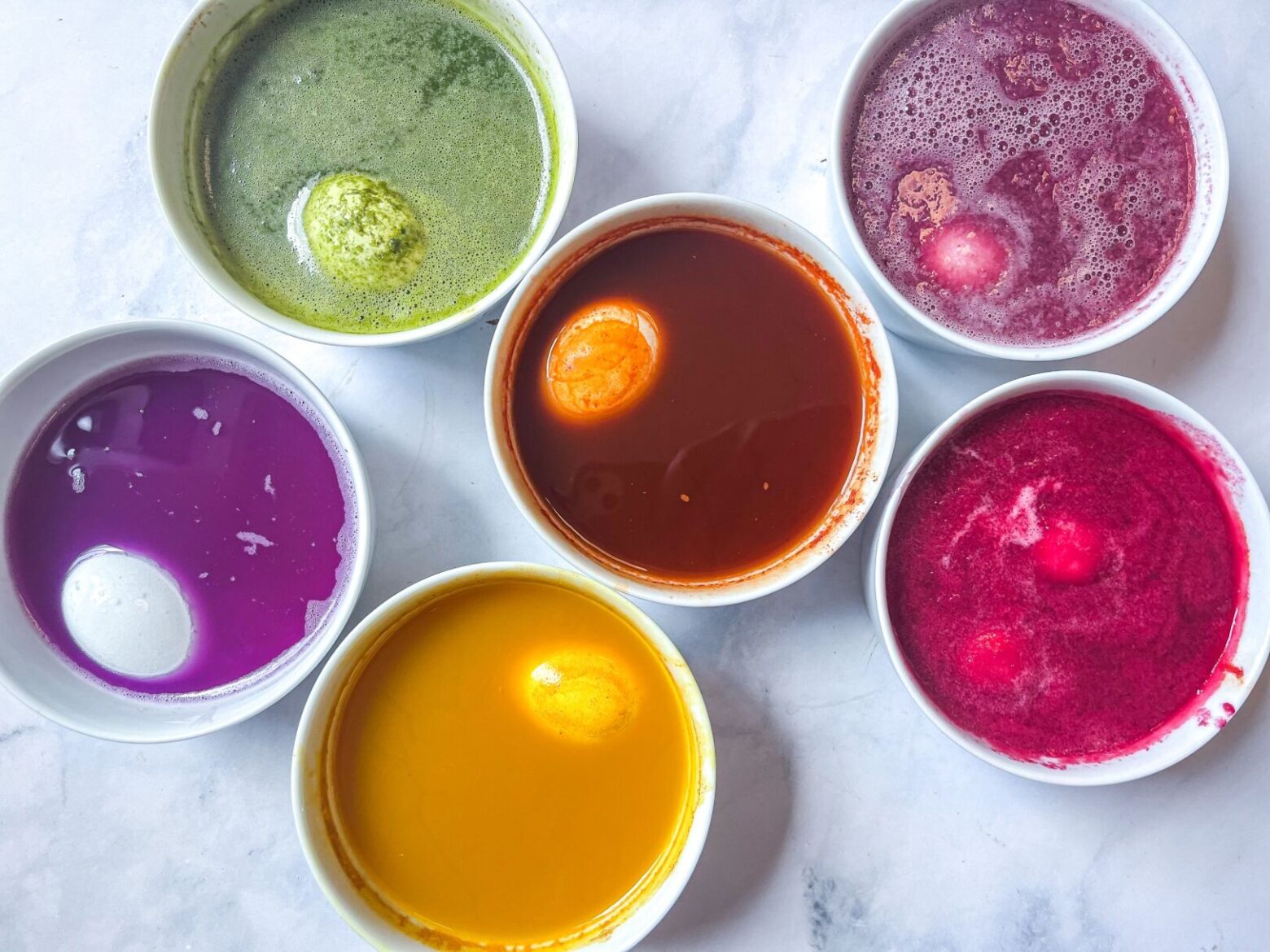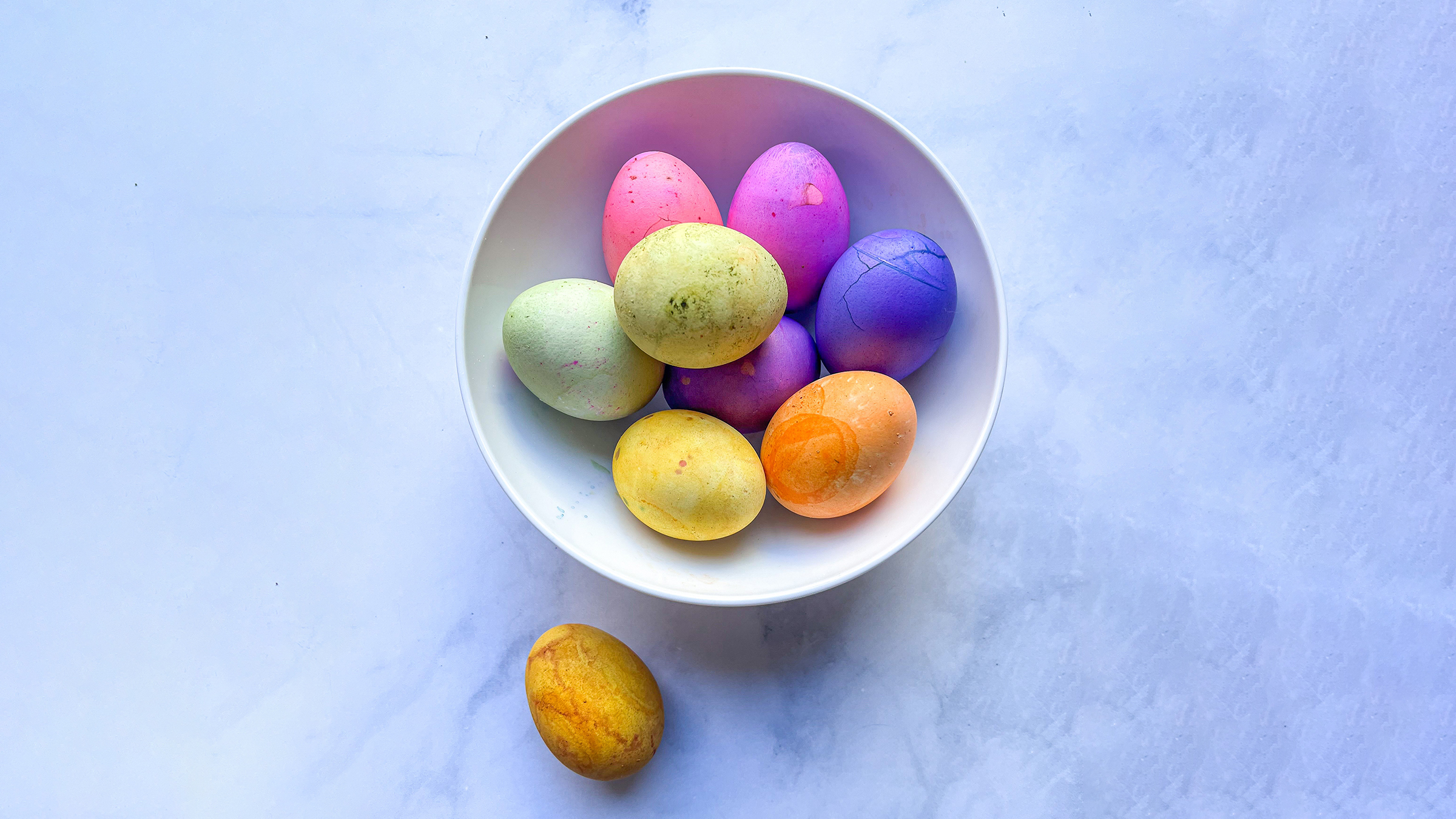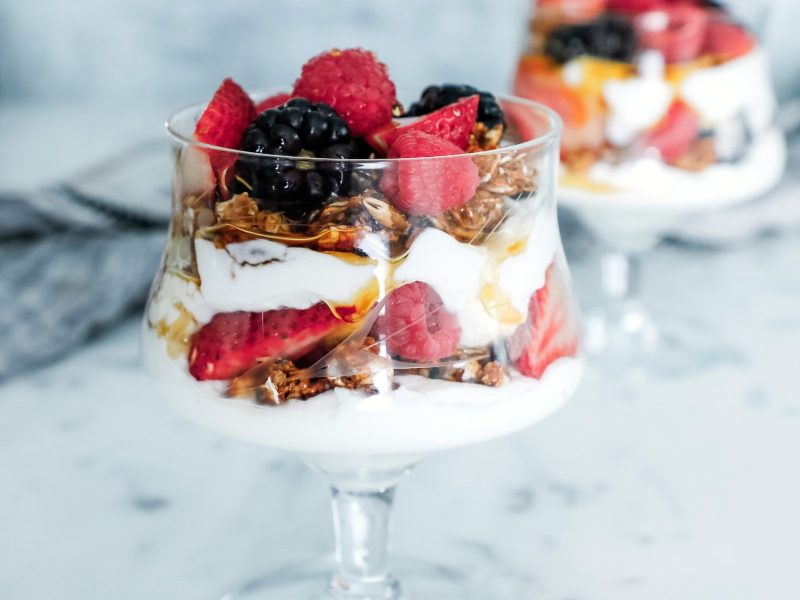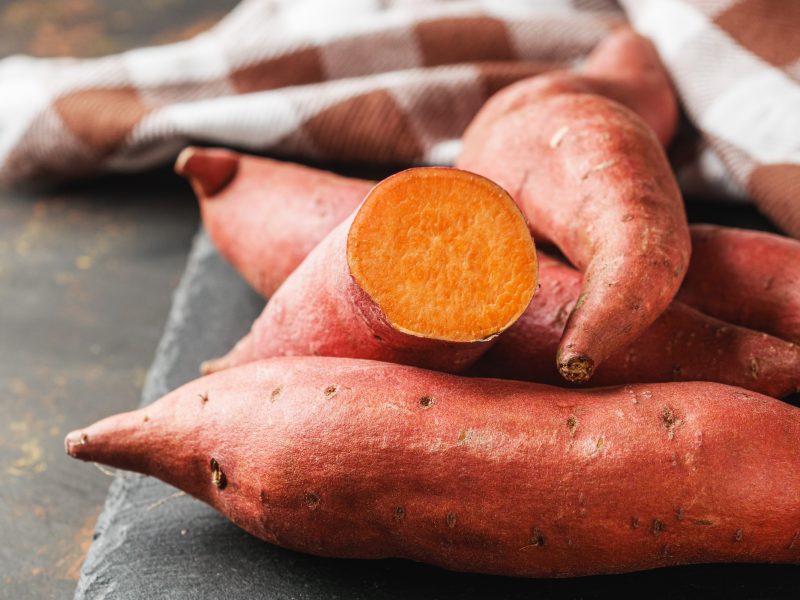For an easy Easter craft, look no further than your fridge and spice cabinet. The following ingredients can be used to make simple, natural dyes for festive decorations—and there’s a few ways you can use them to color your eggs. To get started, grab a pot, water, eggs, and as many natural coloring agents as you’d like. Then choose the best method for you below.
Natural Dye Methods
- For more vibrant colors, boil each ingredient with as many eggs as you want in a medium pot with water for about 30 minutes.
- For softer colors, boil the ingredients in water, then strain out the solids and allow to cool before soaking the eggs for 30 minutes. You can used hard-boiled eggs for this room-temperature method or raw eggs if you plan to hollow them out later—plus this method is safer for kids to participate in.
- For festive deviled eggs, peel and halve a hard-boiled egg before soaking 10 minutes in a bowl of room-temperature natural dye.
Tip: Boiled a batch of eggs ahead of time and forgot which ones were which? Just give it a spin. If the egg spins easily, it’s hardboiled. If it struggles to gain momentum, it’s raw.
How to Create Natural Dyes
Red/Pink: Beets are vibrant vegetables that will give you beautiful pinkish-red eggs. Boil beets with water to extract their color or soak the egg in room-temperature beet juice.
Orange: Paprika isn’t just great for the final touch on your deviled eggs. When mixed in water, it will give you a bright orange dye.
Yellow/Gold: Anyone who has cooked with turmeric knows this spice has a tendency to saturate everything it touches with yellow. Play around with the concentration of turmeric in water—less turmeric will give you a lighter yellow, while more will learn toward an orange hue.
Green: Boiled spinach can yield a green color for your eggs if using older leaves, otherwise it may turn out yellow-green. If the color is still not as green as what you’re hoping for, try adding a splash of natural blue dye to even out the hue.
Blue: Red cabbage is a funny vegetable. Its color is purple, and when boiled in water it creates a blue tone. As blue can be hard to replicate naturally in recipes, this is a go-to natural dye when you need to bring out the color in certain dishes, like the blue layer in these Rainbow Popsicles.
Purple: Ripe blackberries will yield a darker juice to use as a purple dye compared to unripe berries. Choose ones that are dark, plump, and give slightly to the touch. Slice the berries before adding them to the pot to boil.



